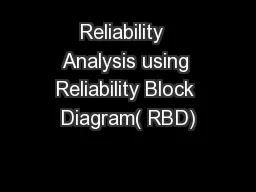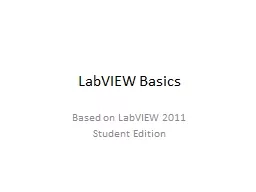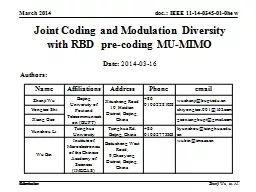PPT-Reliability Analysis using Reliability Block Diagram( RBD)
Author : cheryl-pisano | Published Date : 2018-09-21
ASQ RD Webinar Series Reliability Works Incorporated 8301100 Melville St Vancouver BC Canada V6E 4A6 Copyright Reliability Works Inc 2018 Presented by Frank
Presentation Embed Code
Download Presentation
Download Presentation The PPT/PDF document "Reliability Analysis using Reliability ..." is the property of its rightful owner. Permission is granted to download and print the materials on this website for personal, non-commercial use only, and to display it on your personal computer provided you do not modify the materials and that you retain all copyright notices contained in the materials. By downloading content from our website, you accept the terms of this agreement.
Reliability Analysis using Reliability Block Diagram( RBD): Transcript
Download Rules Of Document
"Reliability Analysis using Reliability Block Diagram( RBD)"The content belongs to its owner. You may download and print it for personal use, without modification, and keep all copyright notices. By downloading, you agree to these terms.
Related Documents














